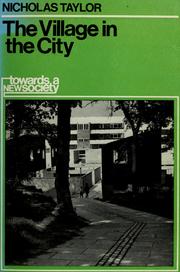This website uses cookies
This website uses cookies to enable it to function properly and to analyse how the website is used. Please click 'Close' to accept and continue using the website.



You’ve got until Wednesday night (17th July 2012) to watch the controversial programme on the regeneration of Deptford on i-player – I’ve had loads of word of mouth recommendations for this series, and I think its well worth looking at:
The programmes include lots of good stuff– but don’t take their arguments totally straight. Each episode looks at the history of single London street—I loved the maps and prints showing Camberwell Grove as a real grove — a long double avenue of trees, planted to stretch out into gorgeous open countryside. It’s the more recent histories that are more contentious (as always)—and of interest here at C20 Society.
Partly the programmes have become a demonstration of the on-going processes of gentrification (lots of footage of posh couples admiring historic features under the enthusiastic escort of gushing Estate Agents—juxtaposed with previous residents coming back to their childhood homes and saying “oh the old toilet out back’s gone” “we never had a bath” and …. “that’s where my Mum was laid up with TB etc.). The relationship between conservation and gentrification post 1945 obviously needs more study, but that’s not what the major fuss is about.
Clips of vintage film, with posh-voiced planners standing over maps and models, get easy gasps of horror, and makes great TV, and poor old Nicholas Taylor (architectural Historian and Lewisham Councillor) was made a very unfair scapegoat for sink estates in the episode on Deptford High Street, coming over as ill-informed and uncaring. It’s all too easy to look back today and say that the big estates of the 1960s and 70s were a gigantic mistake and that it would have been far better to just restore Victorian and Georgian terraces, and add new bathrooms and kitchens.
The truth is much more complex and much more interesting. Most crucially, allowing a more sophisticated story to emerge might make for a more balanced approach to housing provision today.
Nicholas Taylor doesn’t deserve his depiction as the arch-villain. I went and met him back in the early 1990s, when I was first researching the history of Britain’s post-war housing estates, and realised immediately that he was someone who had allowed experience to change the direction of this his thinking, and his life, and that he remained passionately committed to improving the quality of Londoners’ housing. Of course sometimes passion can be very misdirected: in the programme he was presented as a fanatical supporter of wholesale demolition, and uncaring about extended families being broken up and shunted off to shoddily built high rise, and slab block estates.
In fact Nicholas Taylor spent most of his career calling for a very different approach, and it’s all documented. As Gavin Stamp recalls in his chapter in our new Journal The Seventies, he, (that’s Nicholas Taylor, not Gavin) organised tours for the Victorian Society, and was the author of “The Village in the City”, published in 1973, which promoted lots of ideas that Deptford residents would totally support. There’s is an interesting article, written by Tony Aldous (another fascinating figure) for Building Design (24th June 1977) which concludes the following:
All in all, the Lewisham approach to inner city revitalisation as championed by Nicholas Taylor and his colleagues can be said to rest on four main principles:
Rehabilitate wherever you can rather than demolish;
Where you rehabilitate, do it gently so as to preserve the community;
Whether you redevelop or rehabilitate, tell people what you intend – and listen to what they are trying to tell you;
When you redevelop, make your houses look like houses – domestic in scale and style, non-institutional, and uncomplicated in form.
We have visited some of the resulting infill developments on C20 members’ visits, and check out this Building of the Month piece too: http://www.c20society.org.uk/botm/walters-way-lewisham/ Nicholas Taylor has published his own rebuttal as well.
What no-one has said as yet, is that surely there is something similar going on right now. Large areas of overcrowded and run down housing are being cleared wholesale and their residents’ dispersed. Not Victorian terraces this time, but post-war estates with potential for refurbishment.
Some post war estates were not terrible. Like the Victorian terraces that were demonised in the 1960s and which we now feel so fondly about (and pay £millions for), their main problems have been poor maintenance, lack of regular well designed updates, and overcrowding. Left to rot and stigmatised they are not exactly popular anymore. However, estates like Robin Hood Gardens and the Haygate are basically sound, spacious and have access to high quality outdoor space. New developments such as the (for now) shiny Strata Tower, and St George’s Wharf at Vauxhall, are in many ways inferior and may end up as the slums of the future. Whilst we are only arguing for the listing and retention on “architectural and historic interest grounds” of a tiny minority of post war estates, many more could be refurbished, and of course, the refurbishment option both allows communities to stay together and is more environmentally sound. Might a future version of this programme have displaced tenants from blocks like these nostalgically remembering their happy childhoods playing on the walkways?
Buy The Seventies Journal here: http://www.c20society.org.uk/books/journal-10-the-seventies/
Read Tony Aldous’s BD article here: l http://deptfordptrs.com/pdf/deptford-rejuvenation-article.pdf
And read Nicholas Taylor’s response to the TV programme here: http://deptfordptrs.com/#

Become a C20 member today and help save our modern design heritage.
Comments